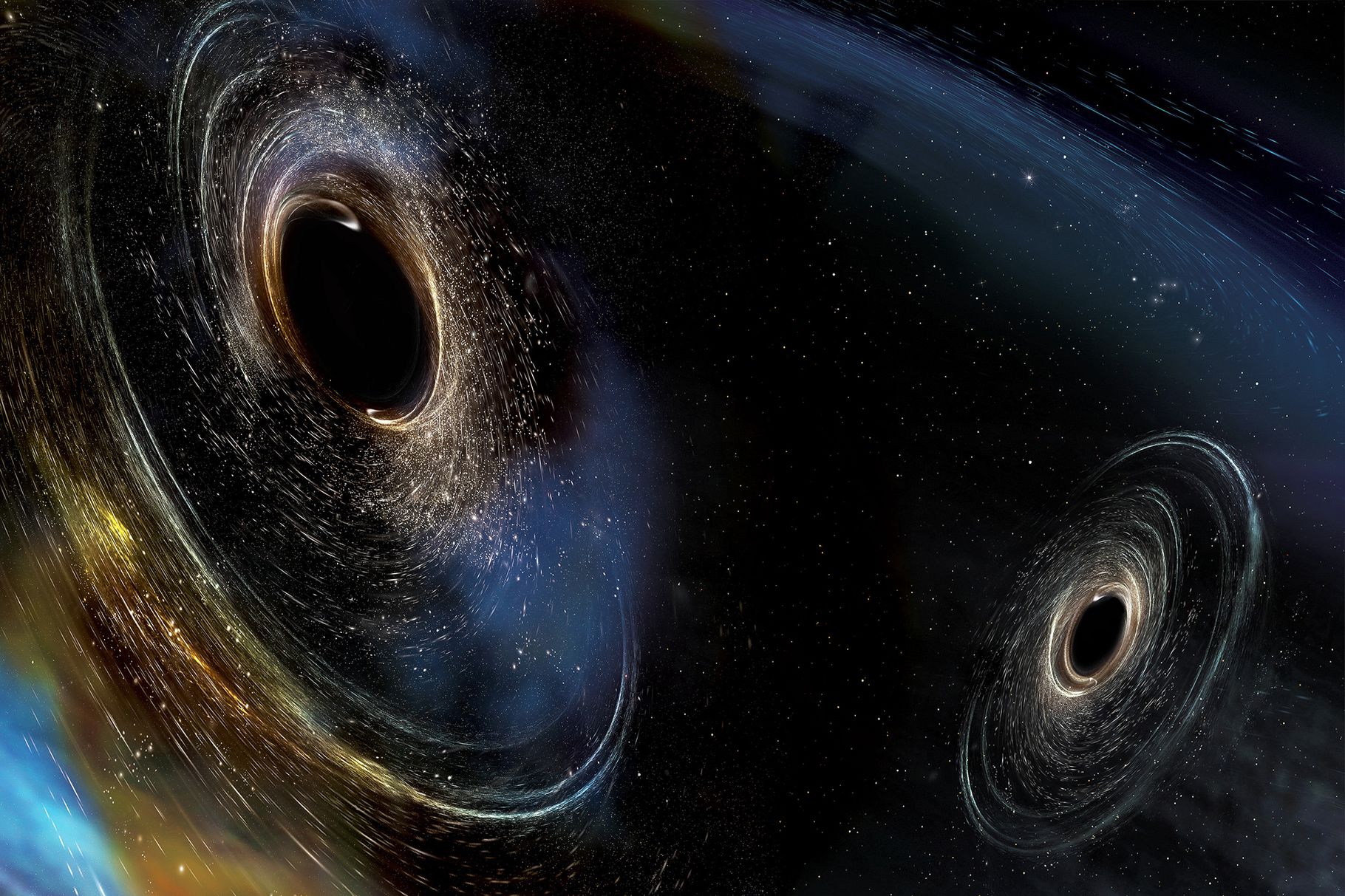A third detection of gravitational waves, ripples in space and time, has been made. As was the case with the first two detections, the waves were generated when two black holes merged to form a larger black hole.
The new-found black hole, located about 3 billion light-years away (twice as far away than the two previously discovered systems), has a mass of about 49 times that of our Sun, an intermediate value between those previously detected in 2015 (62 and 21 solar masses for the first and second detection, respectively).
The discovery is described in a new article accepted for publication in the journal Physical Review Letters. The event occurred during the current observing run of the twin LIGO detectors in Hanford, Washington, and Livingston, Louisiana, which began November 30, 2016, and will continue through the summer, when the Virgo detector in Europe will join to improve the pointing capability of the entire detector network.

""
Graphics: LSC/Sonoma State University/Aurore Simonnet
"With this third detection we confirm the existence of an unexpected population of stellar-mass black holes that are larger than 20 solar masses," says Jo van den Brand of Nikhef and VU University Amsterdam, the newly elected spokesperson for the Virgo Collaboration, a body of more than 280 international scientists who perform gravitational waves research together with the LIGO Collaboration. "The entire LIGO and Virgo scientific collaborations worked together to make these amazing detections of such extreme events that took place billions of years ago.”
Hungary is the only country where LIGO and a VIRGO group exists parallel and work closer to each other than anywhere else.
The members of the Gravitational Physics Group in Wigner Research Centre for Physics are cooperating with the LIGO and VIRGO by developing theoretical modelling of gravitational wave forms and computational algorithms. The group members are also working on the data analysis and on the review procedure in the Virgo collaboration.
Gravitational Waves Detecting:
https://www.youtube.com/watch?v=QRm7Amaob6U
More info about second detection:



